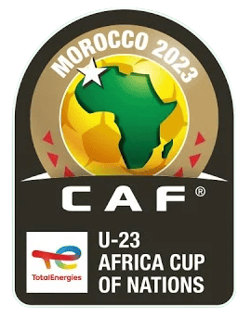CAF African Schools Football Championship builds leaders of tomorrow

The CAF African Schools Football Championship is set for Durban early next month when 14 of the top boys’ and girls’ schools on the continent will meet for the right to be crowned African champions.
It is a ground-breaking event that has huge ramifications for the future of football on the continent, but also seeks to create our new leaders of tomorrow.
Speaking to CAFOnline.com, Sarah Mukuna, Director of Member Associations, discusses the idea behind the programme and how it has come alive in Africa.
Why is schools’ football so important for CAF?
One of the best investments we can make for the future of football on the African continent is to build our talent pool from the base up, and for many children that starts at their schools. Many of our continent’s top stars, who have gone to the very highest level of the game, started their football journey at school level. It was their first contact with the game and where they grew their passion. We believe there are many footballing gems out there, both boys and girls, and we want to give as many as possible the chance to fall in love with the game and showcase their talent.
The hope is no doubt that this will lead to improvements at club and national team level in the future as well…
Yes, the more people you have playing and enjoying the game, the more chance you have of finding top talent. We want schools football on the continent to be inclusive of everybody, and provide a platform for young boys and girls to showcase their skills and perhaps create a future for themselves in the game. People cannot shine if the opportunity to do so is not there, so we have created that platform through the CAF African Schools Football Championship. It will be exciting to see the talent that develops out of it in the coming years.
How many youngsters have taken part in the inaugural event in 2022/23?
Some 400,000 boys and girls and over 20,000 schools have participated this season, already massive figures that we want to grow in the coming years. That is participants from 41 countries across the continent, which is a huge achievement in the first year. We want to grow that reach further and expand on what we have done in year one.
The campaign is not only about the football …
We have developed a number of workshops and programmes around the CAF African Schools Football Championship to provide knowledge to the young players away from the pitch. This is part of the groundbreaking African Schools Programme™ which uses football as a focus point to positively impact the communities within and around the participating schools. We have had a young referees programme and a young reporter programme that teaches kids all aspects of the media landscape. At the first-ever continental finals in Durban, we will have further workshops for referees, coaches and youngsters interested in the media space. Schools are also an important vehicle for the teaching of key life values and football encompasses all of that – respect, discipline, teamwork and fair play. Those things are important on and off the pitch and valuable skills that these students can use later in life.
The Motsepe Foundation has donated USD 10-million for this event …
Yes, and that shows the commitment that Dr Patrice Motsepe and Dr Precious Moloi-Motsepe have to young people on our continent. Through the Motsepe Foundation, they have been promoting academic and sporting excellence in South Africa for many years, so this is taking that concept and spreading it across the whole continent. Prize money totaling USD 2.7 million was distributed to schools in the zonal phase of the CAF African Schools Football Championship and a further USD 1.3 million will be on offer at the continental finals. The hope is this money will be used by the schools to improve their infrastructure and programmes, and in doing so provide even more opportunities for young players in the future.
Tell us a little about how the matches are played …
There are eight players on each side and the games are played on what we term a half-pitch, if you imagine just one half of a conventional football pitch. The goals are also a bit smaller than usual. Games last 40 minutes, 20 minutes per half, with a 10-minute break in between. The teams can use unlimited substitutes and keep players rolling on and off as they choose. The boys’ and girls’ competitions will see the seven competing teams split into two groups in the opening stage. Group A will have three teams and Group B will contain four. They will play each other in a round-robin format with the top two sides in each pool advancing to the semifinals. The top team in Group A plays the runners-up in Group B, and vice-versa. Aside from the final, there will also be a bronze-medal match to decide who finishes third.












